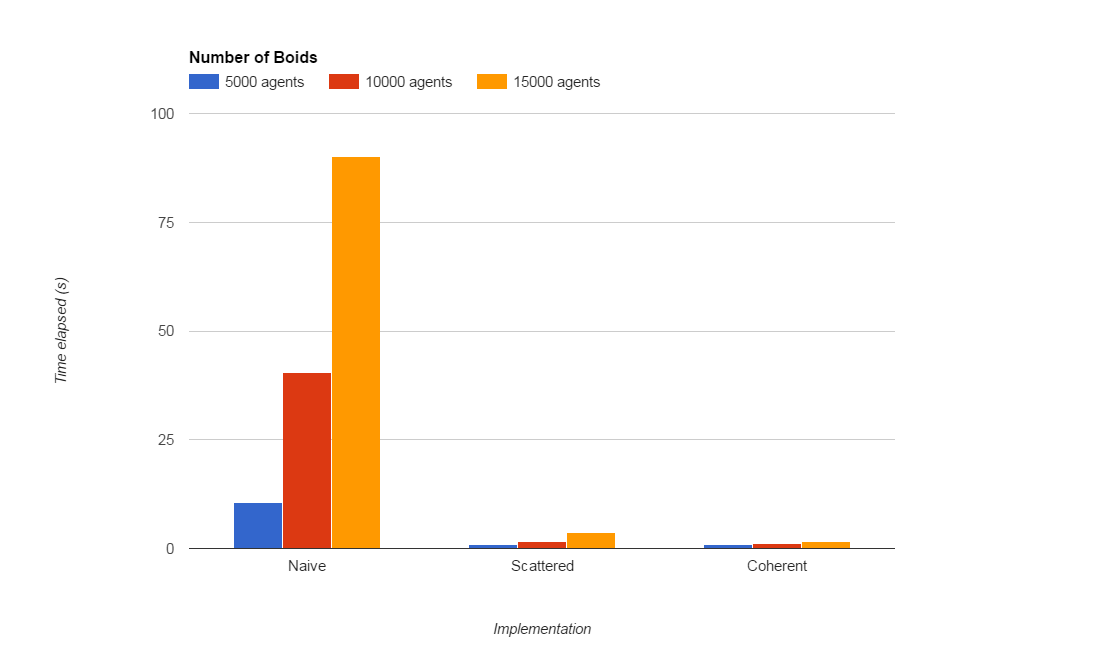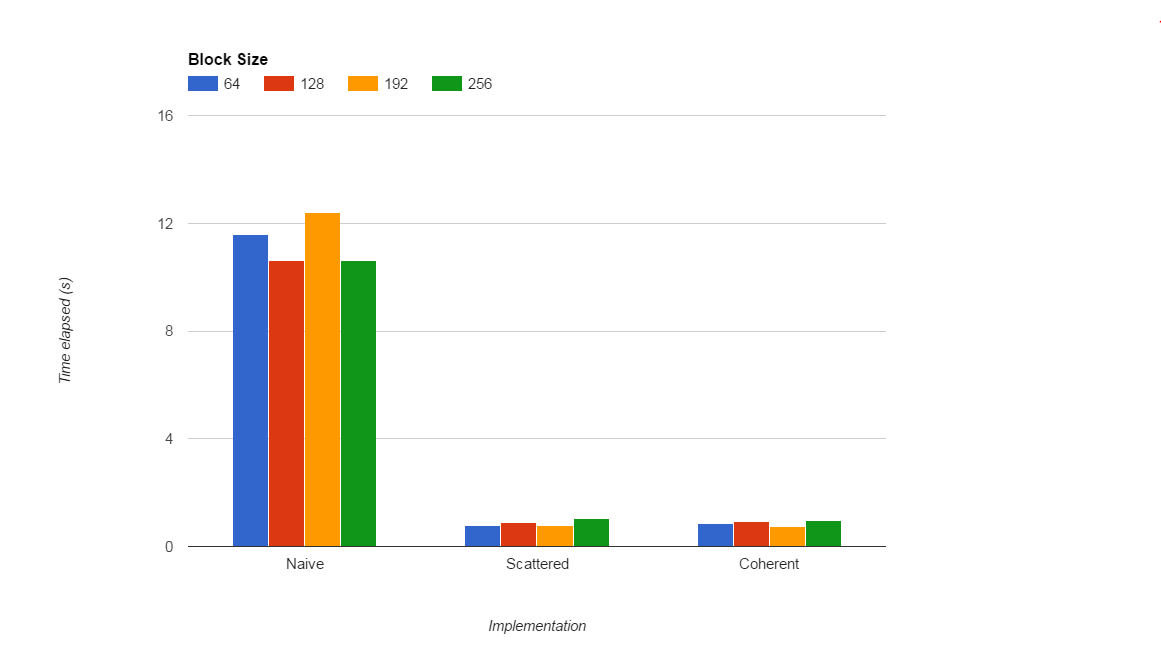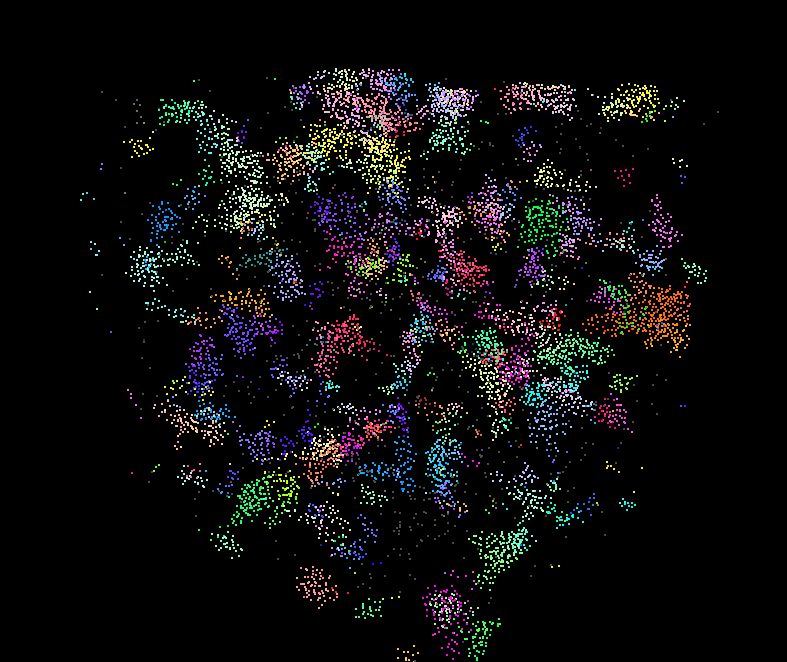- Richard Lee
- Tested on: Windows 7, i7-3720QM @ 2.60GHz 8GB, GT 650M 4GB (Personal Computer)
Performance testing was done by measuring the time taken to run 1000 frames of the simulation on each implementation with the different variables.
Number of boids
Testing the number of boids was run with a block size of 128.

Block size
Testing the block size was run with 5000 boids.

Coherent uniform grid analysis For the coherent uniform grid, the performance was about equal at 5000 agents, with the scattered uniform grid being slightly faster than the coherent grid. However, as the number of agents increased, the time taken for the coherent grid increased at a slower rate and outperformed the scattered grid.
I expected the coherent grid to outperform the scattered grid at all numbers of agents, and I think this result was because less agents meant that there wasn't as much chance to take advantage of the contiguous boid data, and led to a small difference in performance due to the extra pre-processing step to shuffle the boid data.
However, the coherent grid allowed for faster direct access of all the boids after the pre-processing shuffle as the number of boids increased, while the scattered grid still had to perform lookups for each boid in the position and velocity arrays, which led to performance advantages as the number of boids scaled up.
